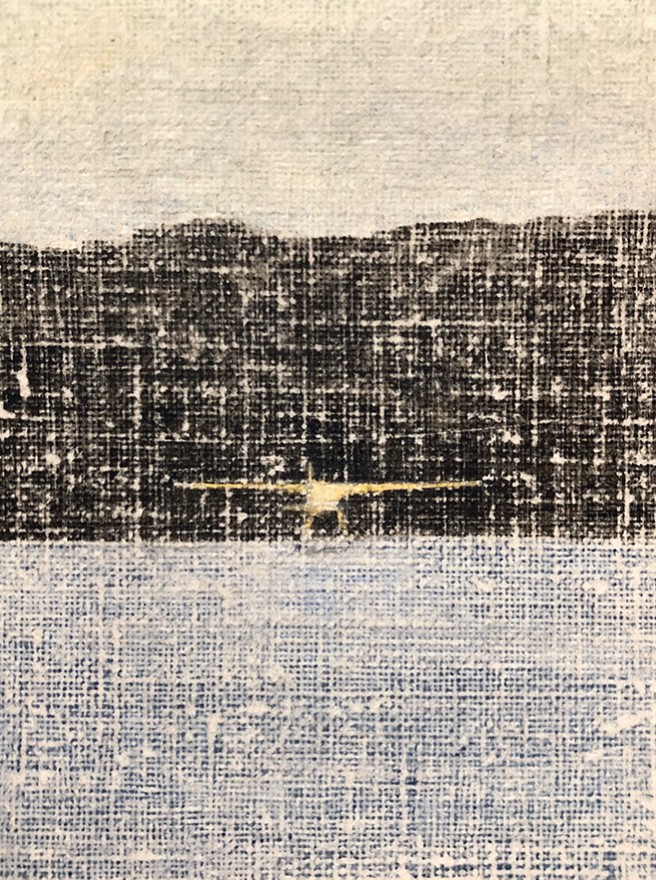The World in a Sanded Grain
Winnipeg painter Eric Allan Cameron is making a big statement in a small way. He is producing a body of oil paintings on canvas paper, the largest of which is 20 x 15 cm and the smallest is 9.5 x 7 cm, on the subject of landscape, camping and fishing. The large painting shows a minimal landscape in which a fluctuating black horizon line stretches from one side of the composition to the other, while the water and sky are indicated through delicate blends of red and green. The small painting, which is Cameron’s favourite in the series, shows a float plane, so tiny the pontoons are only a suggestion in the water, viewed head-on. Both these paintings, and all the others in the series so far, are painted and then sanded down, sometimes as many as four times. The effect of this meticulous process of marking and removing is to allow the grainy weave of the canvas paper to become not only the surface of the painting but an inseparable part of the painting’s content as well. The painted subjects and the painting of them are equally what these paintings mean. And they can almost mean nothing at all because the pigment has been applied so minimally and then removed so carefully that there is barely any colour or image. Cameron’s control is an amazement. These paintings seem to hold in space through an act of will. You feel that if you close your eyes, they will have disappeared when you look again.

Eric Allan Cameron, Impel, 2019, oil on canvas paper, 9.5 x 7 centimetres. All images courtesy the artist.
Their source is an archive of family photographs from the ’60s, taken when Cameron’s grandfather owned a hunting and fishing resort in northern Ontario, as well as photographs he is now taking himself. In the past he avoided using his own family history as his subject, and while that has changed, he has retained a sense of distance from that personal narrative. He says, “One of the ways I have stepped back is to look at this material as my subject matter and not as my history. That is why you can’t really see facial features on the figurative works. That would make the work too personal.”
In addition to making art, Cameron has an abiding interest in art history. He cites a number of historical and contemporary painters, including Édouard Manet, Peter Doig, Tim Gardner and Wanda Koop, who have influenced his way of working. From Gardner he learned how to place a figure in the landscape; from Koop he became acutely aware of tonal subtlety. His delicate fish paintings owe something to Manet and his overall discretion in paint handling comes through Doig. Cameron is a close looker.
A distinct poignancy surrounds these images of a nature that has itself been almost scraped away. What remains seems to emerge through a weathered veil of history. What Eric Allan Cameron has done is to remake the world that we are in the process of tragically unmaking. His fine and careful paintings are the lasting weave of memory. ❚

Left: Untitled (fish), 2019, oil on canvas paper, 8 x 11 centimetres.
Right: Untitled, 2019, oil on canvas paper, 12.5 x 14.5 centimetres.

